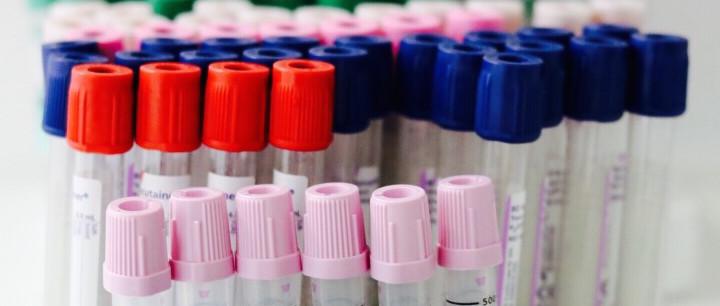
Early in pregnancy, prenatal paternity testing to confirm who the biological father of a baby is can be done as early as the 7th-8th week of pregnancy by a blood test from the mother's blood. Prenatal paternity testing requires both the mother as well as the potential father's blood to be tested.
During pregnancy, a blood paternity test can be done as early as the 8th week of the pregnancy.
Prenatal paternity test from mother's and father's blood: NIPP Noninvasive Prenatal Paternity Test
The NIPP blood test as early as the 8th week of pregnancy is done from the mother's blood and without an invasive procedure that could cause a miscarriage. Several paternity testing centers specialize in testing the maternal blood for the fetal DNA (NIPP=Noninvasive prenatal paternity test) and can compare it to the father's DNA to establish paternity. It requires a simple blood test from the mother and the father. The tests analyze fragments of DNA from the fetus that are present in the mother’s blood in tiny amounts which float freely in the bloodstream of the pregnant mother. These fetal cells can be found as early as the 8th week of pregnancy. A conclusive paternity test report can usually be delivered in less than a week after the company receives the DNA samples.
Prenatal paternity test from invasive testing called CVS
Between the 10-12th weeks, another paternity test involves an invasive procedure called CVS or chorionic villus sampling. CVS can be completed as early as the 10-12th week of pregnancy if the mother is willing to have in vitro testing completed. The test, Chorionic Villus Sampling or CVS requires the mother to undergo a procedure involving a needle being inserted through the cervix via the vagina or the abdomen to pull a sample of the chorionic villi from the uterus. These villi have the same genetic code as the baby and will be used to match the DNA to that of the potential father.
Prenatal paternity test from invasive testing called amniocentesis
Amniocentesis can also be used in paternity testing between the 14th and 20th week of pregnancy. This procedure involves a needle being inserted into the uterus and eventually into the amniotic sac for a fluid draw. The procedure is commonly used to test the lung maturation in pregnancies where the baby may be born prematurely.
Learn about paternity testing during pregnancy!
Aside from prenatal testing, there are four postnatal tests after birth that can be completed as soon as the baby is born. They involve tests on the baby and the possible father. These tests are:
- blood collection,
- cheek swab,
- cord blood testing and
- other DNA samples like hair or semen.
In some cases, the court system will need to grant approval for the paternity testing to be completed if they are involved in the paternity hearing or case. If this is the condition, the mother will need to wait for the court order to complete the paternity testing. Voluntary paternity testing does not require a court order to be completed. The safest forms of paternity testing are any of the four postnatal tests.
Read More:
Women No Longer Have to Wait to ID Dad
What Can Be Used to Test Paternity?
How Do You Read and Interpret a Paternity Test?
